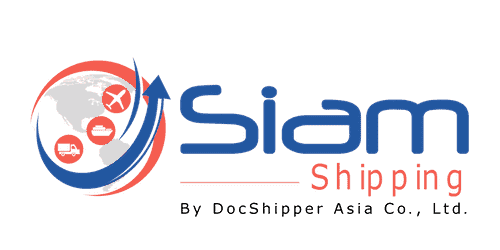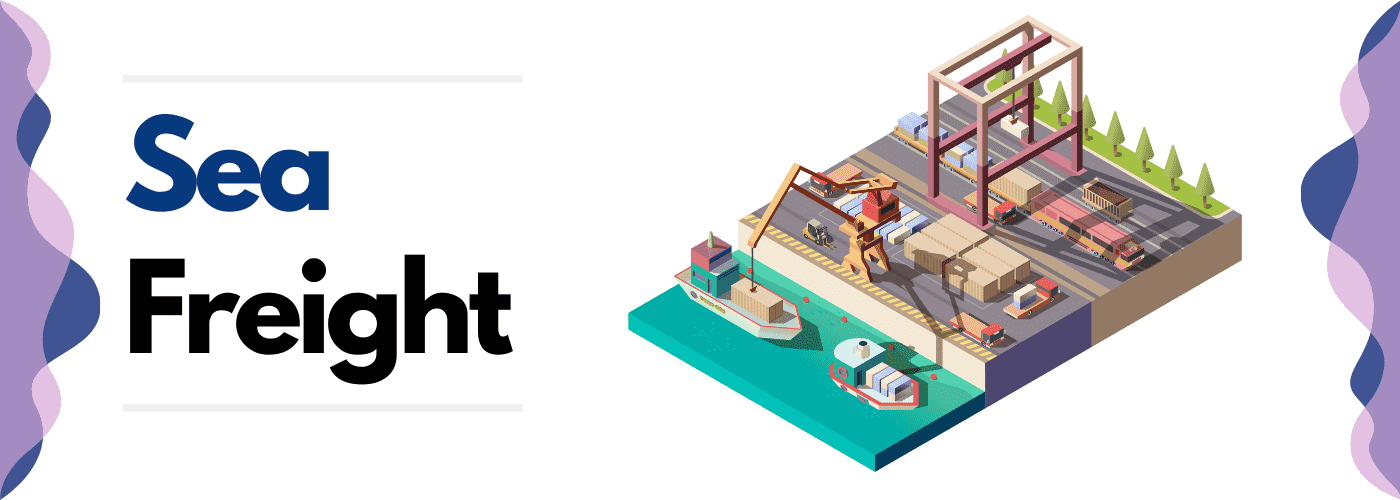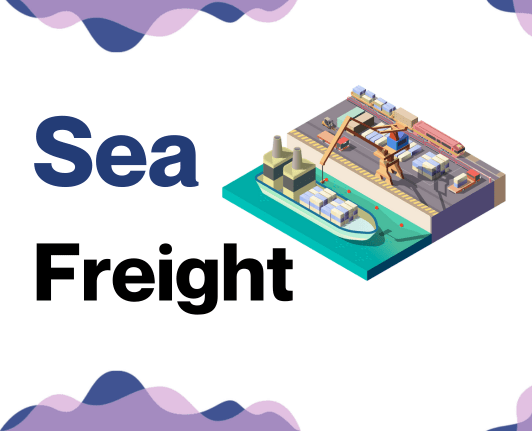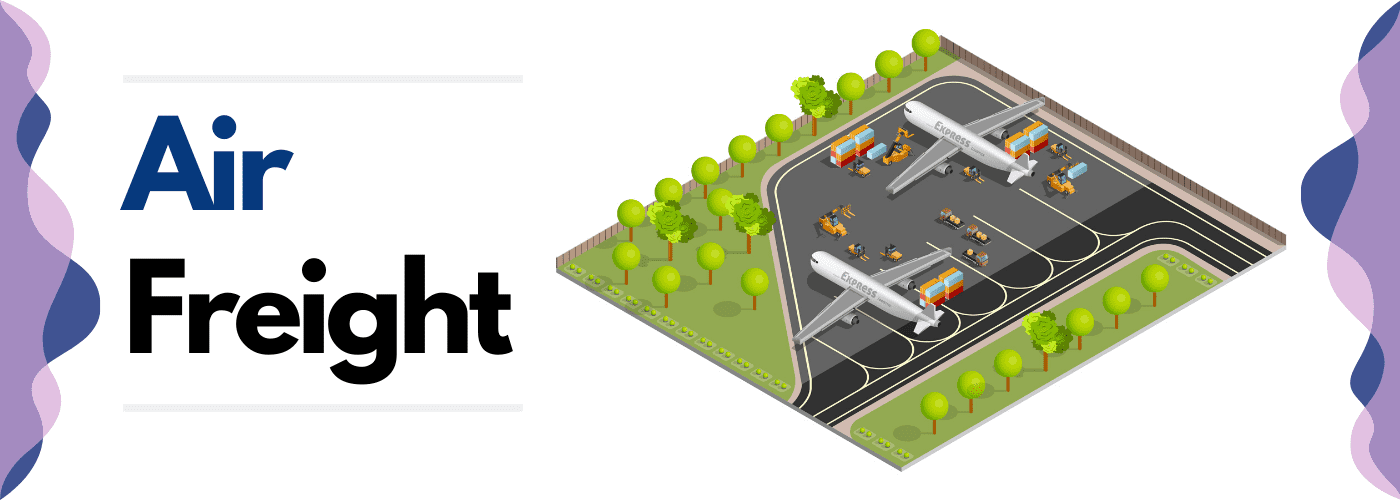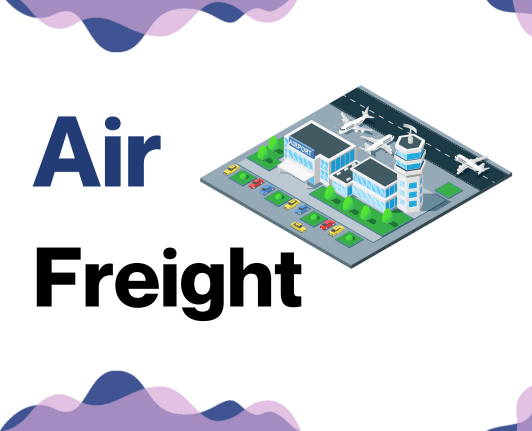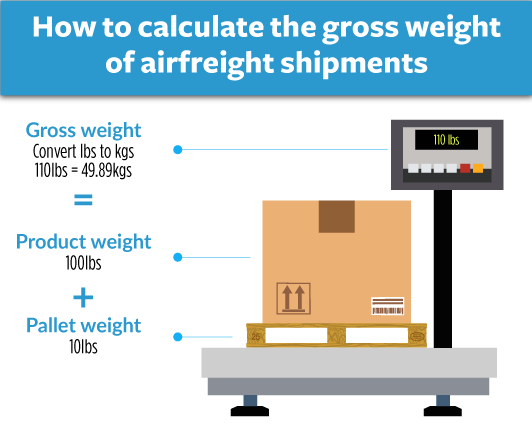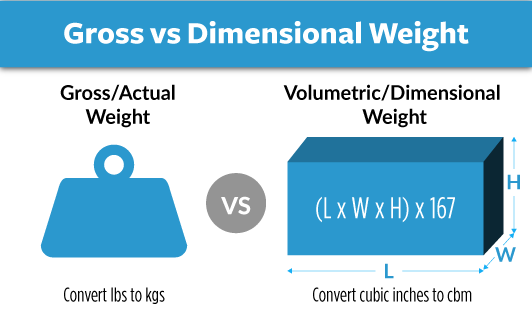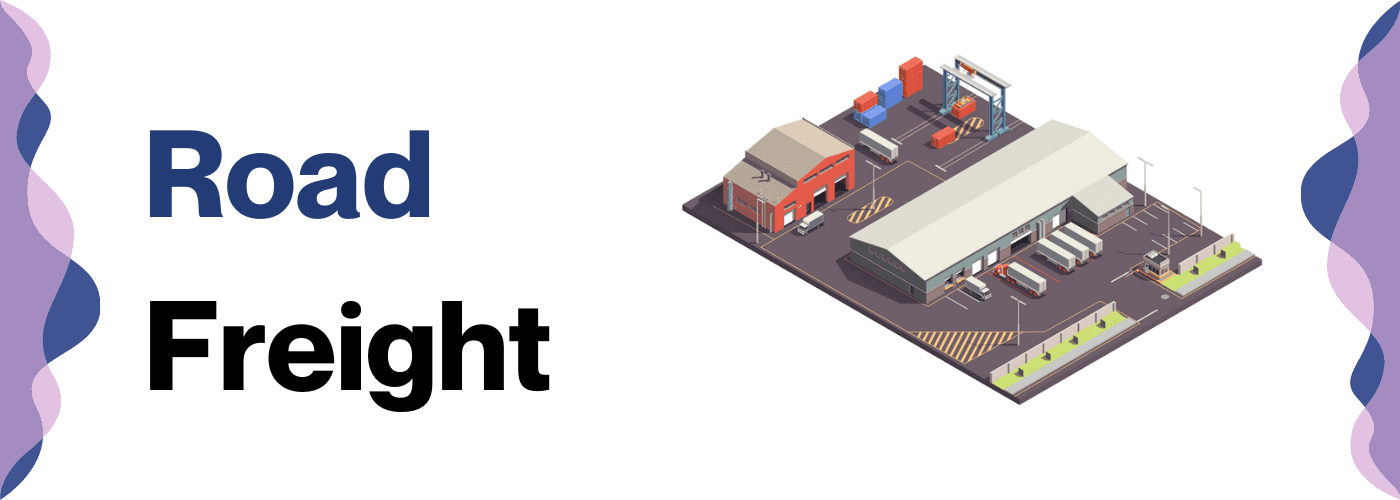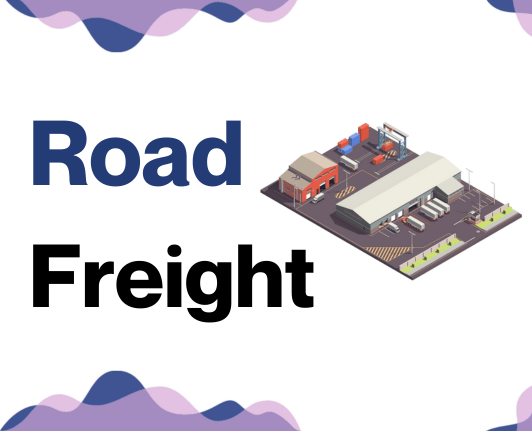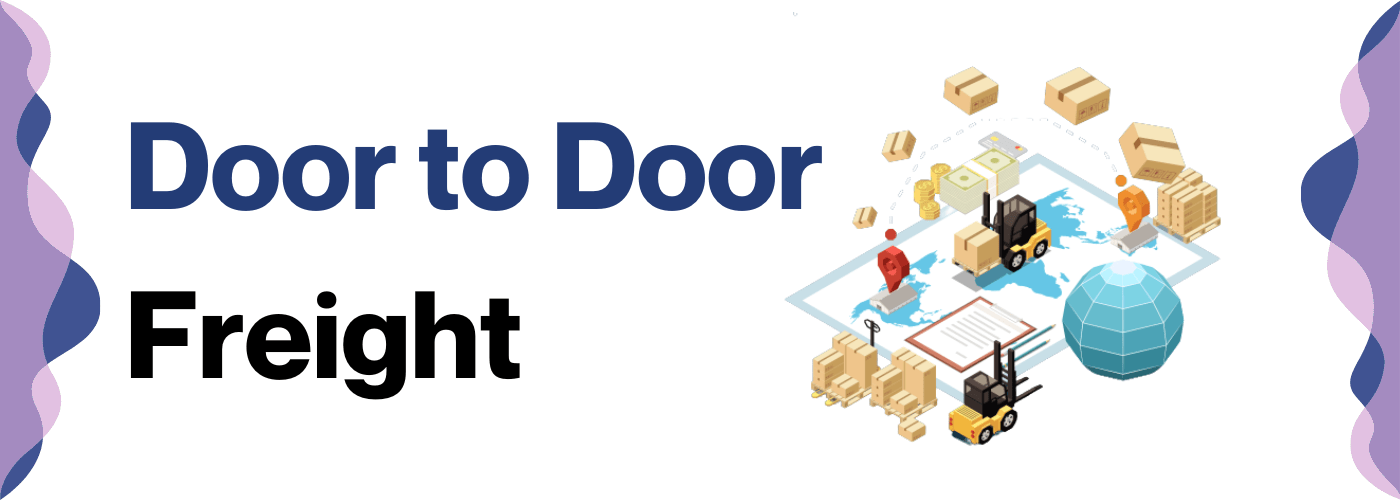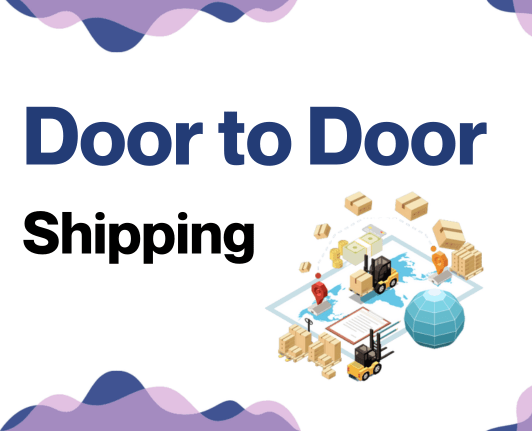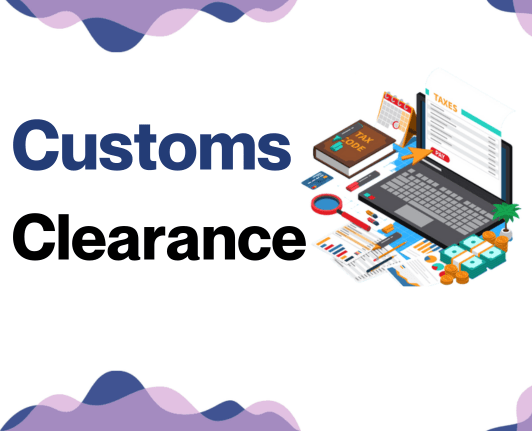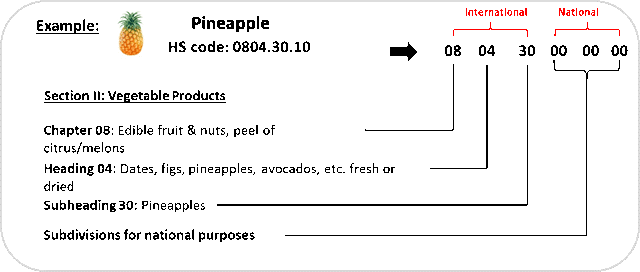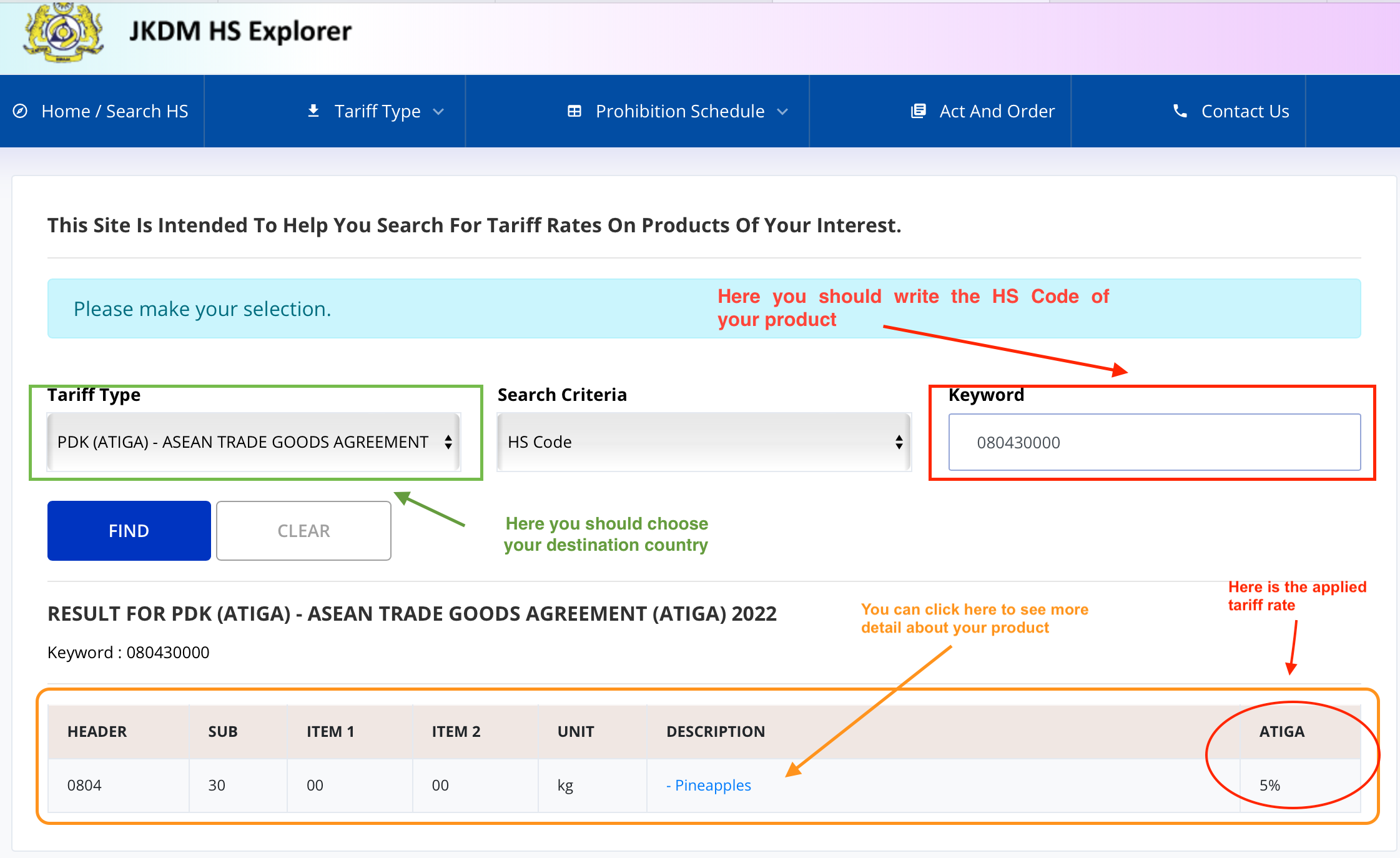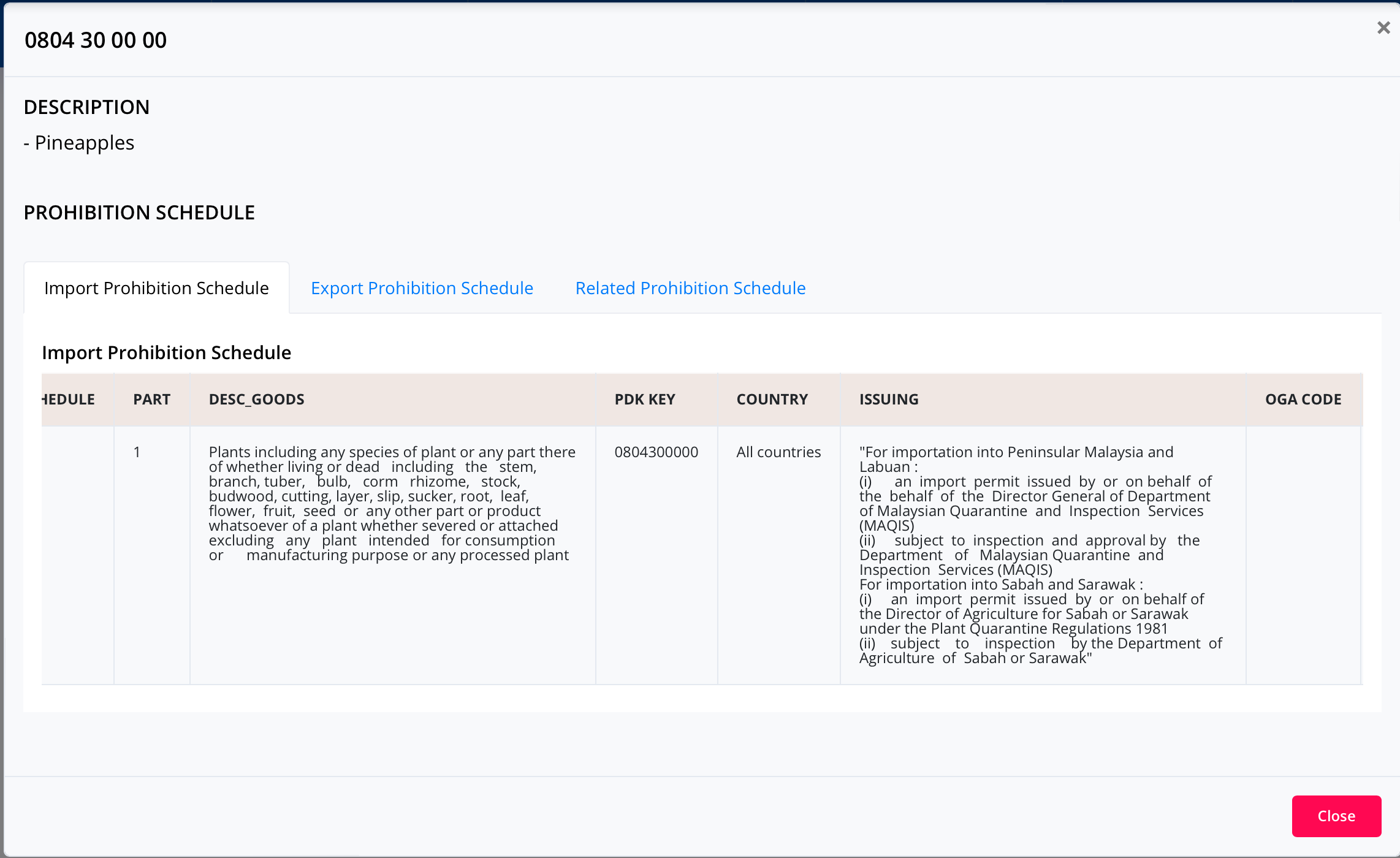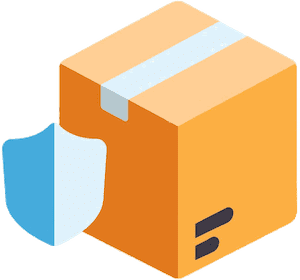Why did the shipping crate move to Thailand? Because it wanted to feel a little less boxed in! Jokes aside, any business looking to navigate the complexities of shipping between Thailand and Malaysia knows it's not always smooth sailing. With rates fluctuating, transit times unpredictable, and customs regulations changing frequently, it's easy to feel a bit adrift.
This guide unravels the intricacies of this process, shedding light on different freight options - be it air, sea, road, or rail, customs clearance procedures, duties, taxes, and valuable advice specific for businesses. From understanding the significance of Incoterms to optimizing routes and ensuring timely deliveries, every essential aspect is explained in detail.
If the process still feels overwhelming, let DocShipper handle it for you! As an international freight forwarder, we specialize in turning these complex shipping challenges into successful, straightforward transactions for your business.
Table of Contents
Which are the different modes of transportation between Thailand and Malaysia?
Bordered by land and a stone's throw away at sea, Thailand and Malaysia share more than spicy food love. They're like homes on the same block, separated by a fence. Choosing the best transport method isn't about distance, it's about your cargo. Got something bulky and time's generous? Hit the highway with trucks. Urgency reigning and pockets deep? Sky's your gateway via air freight. If you're balancing costs, time and quantity, freight trains or the sea route might be the perfect middle-ground. Like picking ice-cream flavors, align your selection to your cargo's unique needs.
How can Siam Shipping help?
Navigating the shipping world between Thailand and Malaysia? Leave the complex logistics to DocShipper! Our experts handle everything from customs clearance to administrative procedures, ensuring your cargo reaches its destination safely and efficiently. Why wait? Reach out to our team for a free estimate within 24 hours or dial up for a free consultation with our consultants! Cherish smooth, worry-free international shipping with DocShipper!
Siam Shipping Tip: Consider ocean freight if:
- You are shipping large volumes or bulky items, as sea freight offers the most space at a cost-effective rate.
- You're not racing against the clock. Ocean freight takes its sweet time, especially when stacked up against other transport methods.
- Your supply chain is linked up with big-name ports. Think of it as the VIP lane on the maritime superhighway.
Sea freight between Thailand and Malaysia
Ocean shipping forms a vital artery in the vibrant commercial bond between Thailand and Malaysia. Imagine this route as a bustling highway on water, the cargo ports at Laem Chabang, Bangkok, and Pattaya connecting seamlessly with Port Klang and Johor Port. The massive volumes they handle daily justifies the time taken by sea freight and its cost-effectiveness becomes the silver lining for businesses handling high-volume goods.
But, hold on! It's not always smooth sailing on these commercial waters. Even seasoned shippers can drop anchor in troubled areas - complex customs procedures, paperwork errors, or overlooked shipping protocols. It's like missing a crucial ingredient while cooking a delicacy that disrupts the entire recipe. Following best practices and specifications can equip businesses to navigate these bottlenecks, a topic we will steer into shortly. Stay tuned as we unfold the nitty-gritty of this exciting maritime trade journey, making your shipping experience between Thailand and Malaysia as smooth as an ocean breeze.
Main shipping ports in Thailand
Port of Bangkok:
Location and Volume: Positioned at the heart of Thailand on the Chao Phraya River, this port is essential for national and international trade with shipping volume over 1.5 million TEU a year.
Key Trading Partners and Strategic Importance: China, Japan, and the United States are among the port’s primary trading partners, making the Port of Bangkok crucial for maintaining significant trading relationships.
Context for Businesses: If you're looking to expand your reach in Asia and the United States, considering the Port of Bangkok should be high on your list due to its significant trading volume and strategic location.
Laem Chabang Port
Location and Volume: Situated about 25 km north of Pattaya, Laem Chabang Port is the largest port in Thailand in terms of shipping volume, handling approximately 7.2 million TEU annually.
Key Trading Partners and Strategic Importance: As part of the global supply chain, the port has primary trading ties with China, Japan, and other ASEAN countries.
Context for Businesses: For businesses aiming to tap into ASEAN markets or enhance operations within Asia, using Laem Chabang Port could be a strategic advantage, due to its high shipping volume and robust connectivity with significant markets.
Map Ta Phut Port
Location and Volume: Located in Rayong on Thailand's eastern seaboard, Map Ta Phut Port is primarily known as a significant industrial port with an annual shipping volume of over 1 million TEU.
Key Trading Partners and Strategic Importance: Key trading connections with Asian and Middle Eastern countries emphasize the port's importance for industrial and chemical goods trade.
Context for Businesses: If your operations involve the export or import of industrial and chemical goods, Map Ta Phut Port might be a potential asset for its specific focus and experienced handling of such products.
Sattahip Port
Location and Volume: As a part of the wider Laem Chabang locality, Sattahip Port handles commercial cargo and has a shipping volume that eclipses 1 million TEU per annum.
Key Trading Partners and Strategic Importance: Sattahip acts as a vital trade link between Thailand and major East Asian economies.
Context for Businesses: If you're targeting East Asia or want to extend your distribution network in this region, Sattahip Port could serve as an advantageous base due to its solid trading ties.
Songkhla Port
Location and Volume: Songkhla Port is located in Songkhla Province and is a significant southern port in Thailand with a moderate shipping volume.
Key Trading Partners and Strategic Importance: The port serves crucial routes into Malaysia and Singapore, making it strategic for trade within Southeast Asia.
Context for Businesses: If you aim to broaden your operations within Southeast Asia, particularly Malaysia and Singapore, Songkhla Port could be an ideal option due to its robust connections.
Sriracha Harbor
Location and Volume: Located in Chonburi Province, Sriracha Harbor is a key private port in the country, contributing significantly to Thailand's overall shipping volume.
Key Trading Partners and Strategic Importance: The port holds strong trading relations with neighboring Southeast Asian countries and further afield to East Asia.
Context for Businesses: If you're planning to bolster your trade within the Southeast and East Asian markets, Sriracha Harbor could provide valuable relationships due to its established trading pathways.
Main shipping ports in Malaysia
Port Klang
Location and Volume: Located on the western coast of Peninsular Malaysia, it's the largest port in the country, having the volumes of nearly 13.2 million TEUs.
Key Trading Partners and Strategic Importance: The port has major trading partnerships with China, Singapore, Indonesia, and the United States. With its Northport and Westport terminals, Port Klang plays a pivotal role in Malaysia's economy as a key player in international shipping.
Context for Businesses: If you're looking to expand your business to Southeast Asia or the Pacific Rim, Port Klang can provide fast and efficient connections given its status as a regional shipping hub and its proximity to Kuala Lumpur.
Penang Port
Location and Volume : Located at the northwestern part of Peninsular Malaysia, the Penang Port's volume is nearly 1.52 million TEUs.
Key Trading Partners and Strategic Importance: The port has major trading partners in China, Singapore, and the United States. Penang Port is of crucial importance for northern Malaysia, serving as a vital link for domestic and international trade.
Context for Businesses: If you require access to markets in northern Malaysia or Southern Thailand, Penang Port's advantageous location, together with its comprehensive facilities, could benefit your shipping strategy.
Johor Port:
Location and Volume : Situated at the southern end of Peninsular Malaysia, Johor Port has a volume that reaches around 570,000 TEUs.
Key Trading Partners and Strategic Importance: With Indonesia, China, and Thailand as key trading partners, Johor Port is in a strategic location that abuts the eastern shipping lane, allowing it to service the southern region specifically.
Context for Businesses: If you're planning on reaching out to markets in southern Malaysia or neighboring Singapore, Johor Port's strategic location could offer your business excellent logistical options.
Bintulu Port
Location and Volume: Bintulu Port, situated in Sarawak on the island of Borneo, is the busiest port in Malaysia in terms of cargo tonnage, handling nearly 47.4 million tons.
Key Trading Partners and Strategic Importance: Bintulu Port has major trading partners in Japan, South Korea, and Taiwan. With its status as the world's largest LNG Terminal complex, it plays a significant role supplying energy worldwide.
Context for Businesses: If your business involves energy trading, especially LNG, Bintulu Port, with its world-class LNG handling facilities, could well become the cornerstone of your logistics operations.
Kemaman Port
Location and Volume: Kemaman Port is situated on the east coast of Peninsular Malaysia and serves as a focal point for local and international offshore oil and gas industries.
Key Trading Partners and Strategic Importance: The port primarily engages with trading partners from Southeast Asia and the Middle East. Given its strategic positioning, Kemaman Port is critical in serving the nation's thriving oil and gas industry.
Context for Businesses: If your business is in the oil and gas sector, considering shipping through Kemaman Port offers a significant advantage with its direct connections to these industries.
Kuantan Port:
Location and Volume: Situated on the east coast of Peninsular Malaysia, Kuantan Port has a volume of nearly 30 million freight weight tonnes, largely bulk and liquid cargo.
Key Trading Partners and Strategic Importance: The port's main trading partners are China, Singapore, and Indonesia. Kuantan Port is a crucial multi-cargo port serving the needs of the east coast region of Peninsular Malaysia.
Context for Businesses: If your business involves bulk or liquid cargo, Kuantan Port's specialized facilities and prime location could make it a valuable addition to your logistics plan.
Should I choose FCL or LCL when shipping between Thailand and Malaysia?
Choosing between Full Container Load (FCL) and Less than Container Load (LCL) shipping methods can make a big difference for your Thailand-Malaysia supply chain. It's more than just a choice; it's a strategic decision with real impacts on your cost, delivery time, and overall freight success. We're here to explain each option in relatable terms, dispel their complexities, and guide you to make an informed decision that best suits your unique shipping needs. Ready to dive in? Your sea freight mastery starts here.
LCL: Less than Container Load
Definition: LCL or Less than Container Load shipment is an ocean freight transport option where goods from different shippers are consolidated and shipped together.
When to Use: LCL freight is a viable choice when your cargo is less than 13 to 15 cubic meters (CBM). Its flexibility for lower volume shipments makes it ideal for businesses not requiring full container load.
Example: For instance, a boutique furniture retailer in Malaysia importing a small collection of artisanal lamps from Thailand could benefit from LCL shipping. This avoids the rental cost of a full container that won't be fully utilized.
Cost Implications: LCL shipment often incurs extra costs like the LCL shipment fee and customs charges—however, these costs are more manageable than those associated with larger, unneeded full container space. So, you only pay for the space you use, making LCL an economical choice for smaller shipments.
FCL: Full Container Load
Definition: FCL, or Full Container Load, refers to shipping using an exclusive container, either a 20'ft or a 40'ft container. Choosing this option, the entire container volume is utilised by a single shipper's freight, thereby enhancing the safety of your cargo as it remains sealed from origin to destination.
When to Use: If you have high volume cargo, around 13-15 CBM or more, FCL shipping becomes your best bet. High volume keeps the cost per unit low making it an economical choice. Moreover, owing to the unique benefits of safety and efficiency, FCL might be a go-to for sensitive shipments requiring minimal handling.
Example: Let's consider you're a car parts manufacturer in Thailand who needs to ship 50 pallets of auto parts to a plant in Malaysia. You'll get an FCL shipping quote and transport your cargo using a 40'ft container. This way, your consignment stays secure in a single container and you save on shipping cost due to the volume.
Cost Implications: Understandably, an FCL container, though being more cost-effective for high volume shipments, will still overall be pricier than a Less Container Load (LCL). Yet it's crucial to consider the safety, efficiency and potential lowered unit cost when evaluating this investment.
Unlock hassle-free shipping
Choosing between consolidation or a full container for your freight can be challenging. DocShipper - your committed freight forwarding partner, is here to turn the complexities into convenient solutions. Our ocean freight experts analyze the cargo volume, type, and your time and cost priorities to suggest the ideal choice. Trust us to simplify your shipping process from Thailand to Malaysia. Ready to take the next step? Approach us for a free cost estimation. Let DocShipper streamline your shipping decisions, because your business deserves the best.
How long does sea freight take between Thailand and Malaysia?
On average, sea freight between Thailand and Malaysia generally takes around 4 to 7 days. However, these transit times can vary broadly depending on factors such as the specific ports used, the weight of the shipment, as well as the nature of the goods being transported. To get a more accurate estimate tailored to your specific needs, it's recommended to reach out to an experienced freight forwarder like DocShipper for a custom quote.
Let's consider the primary freight ports of both countries for a comprehensive understanding. Here's a glance at these ports and the average shipping times.
| Thailand Ports | Malaysia Ports | Average Transit Time (Days) |
| Port of Laem Chabang | Port Klang | 3–5 days |
| Port of Bangkok | Port of Tanjung Pelepas | 4–6 days |
| Port of Map Ta Phut | Port of Penang | 2–3 days |
| Port of Sattahip | Port of Johor | 3–4 days |
*This data is an approximation, and detailed timing would need an in-depth consultation based on your cargo specifics.
How much does it cost to ship a container between Thailand and Malaysia?
Decoding ocean freight rates seems complex, right? Well, shipping a container from Thailand to Malaysia doesn't come with a fixed price tag. It varies widely due to factors such as Point of Loading, Point of Destination, the nature of goods, the carrier used, and even the monthly market fluctuations. That's why we can't provide a precise shipping cost in this guide. But don't fret! Our dedicated shipping specialists can cite the best rates for you, making sure each quote is tailored specifically to your shipment's needs. This personalized approach allows us to work with the unpredictability of the market, without compromising on your budget or preferences. So, no height is too steep for your business to climb!
Special transportation services
Out of Gauge (OOG) Container
Definition: An Out of Gauge, or OOG, container is a special shipping option designed for cargos that do not conform to standard container dimensions due to their large size or shape.
Suitable for: This shipping method is perfect for heavy machinery, large equipment, and any other oversize cargo that exceeds normal container specs.
Examples: Industrial boilers, construction equipment or windmill propellers are typical goods shipped in OOG containers.
Why it might be the best choice for you: If your business involves transportation of bulky or irregular shaped goods that do not fit in standard containers, this could be your ideal solution.
Break Bulk
Definition: Break bulk refers to cargo that must be loaded individually, and not in shipping containers. Goods are often loaded on pallets or in bags, boxes or drums.
Suitable for: It's ideal for large equipment, over-length or over-weight goods, pieces of machinery or infrastructure materials.
Examples: Forest products, steel or projects cargoes, crates of manufacturing materials or goods are often shipped using the break bulk method.
Why it might be the best choice for you: If your cargo cannot be containerized because of its size or nature, the break bulk method would be the best approach.
Dry Bulk
Definition: Dry bulk is loose cargo load, such as grains, coal, or minerals, that are shipped in large quantities without any packaging.
Suitable for: Companies dealing in large quantities of unpackaged dry material typically rely on dry bulk shipping.
Examples: Iron ore, cement, grains, or coal are typically transported as dry bulk.
Why it might be the best choice for you: If you manage large volumes of unpackaged dry goods, this efficient and cost-effective method could be a potential option.
Roll-on/Roll-off (Ro-Ro)
Definition: The Roll-on/Roll-off method, often abbreviated Ro-Ro, involves vehicles or machinery being driven onto a specialized ro-ro vessel for shipping and driven off at the destination.
Suitable for: It's predominantly employed for transporting cars, trucks, tractors, buses, or any vehicle that can be driven or towed.
Examples: New or used cars, heavy trucks, railway wagons or agricultural machinery are often shipped this way.
Why it might be the best choice for you: If you're in the business of transporting self-propelled or towable machinery and vehicles, Ro-Ro can offer a straightforward transport solution.
Reefer Containers
Definition: Reefer Containers are refrigerated shipping containers for goods requiring temperature-controlled conditions during transit.
Suitable for: They're critical for the transportation of perishable goods, including fruits, vegetables, dairy products, or medical supplies.
Examples: Fresh seafood from Thailand or temperature-sensitive pharmaceuticals can be shipped to Malaysia in these containers.
Why it might be the best choice for you: If your products are temperature-sensitive or perishable, using reefer containers ensures your products stay fresh and safe throughout their journey.
DocShipper understands the importance of making informed decisions when it comes to shipping your goods. Our team of experts is ready to assist you 24/7, providing you with the best possible services tailored to your needs. Contact us today to get your free shipping quote within 24 hours.
Siam Shipping Tip: Consider Air freight if:
- Time's ticking and you can't wait. Air freight is like the express train of shipping; it's the quickest way to get your stuff from A to B.
- You're not shipping a warehouse. If your cargo is under 2 CBM, air freight is a snug fit for your smaller haul.
- Your supply chain ends somewhere off the beaten path. Airports are everywhere, so you can get your goods to those hard-to-reach spots.
Air freight between Thailand and Malaysia
Air freight from Thailand to Malaysia spells speed, reliability, and efficiency, especially for smaller, high-value goods like premium electronics, delicate machine parts, and precious jewelry. It's like split-second messaging for your merchandise, your treasures zipping across the skies faster than a climber conquering the Mount Kinabalu! But here's the catch, even for experienced shippers: missing the devil in the detail can inflate costs, slashing thin profit margins. Often, calculating the weight off the mark—using actual instead of volumetric weight, say—can send your freight costs touch the clouds! Overlooking key best practices can burn a hole in your pocket; hence, we will sail through these choppy waters together, ensuring your air freight journey is smooth and profitable.
Air Cargo vs Express Air Freight: How should I ship?
Baffled between tote bags from Thailand to tasty treats from Malaysia, and can't settle on whether to go with air cargo or express air freight? Here's a simple lowdown - regular air cargo enjoys the company of other goods inside an airliner, while express air freight gets special treatment with its own dedicated plane. Let's unravel this shipping conundrum together so your business can reach new heights, hassle-free.
Should I choose Air Cargo between Thailand and Malaysia?
Opting for Air cargo between Thailand and Malaysia could align with your budget and urgent delivery needs. Airlines like Thai Airways and Malaysia Airlines offer reliable, cost-effective services, ensuring safety and reliability, albeit with longer transit times due to fixed schedules. Particularly attractive for shipments exceeding 100/150 kg (220/330 lbs), air cargo can be a viable option. Check their official websites (Thai Airways, Malaysia Airlines) to glean more details. Remember, each choice should reflect your business needs and priorities.
Should I choose Express Air Freight between Thailand and Malaysia?
Thinking about the fastest way to ship your goods between Thailand and Malaysia? Express air freight could be your best choice. This service uses cargo-only planes, allowing quicker delivery times, often within 1-3 days. Offering a perfect solution for shipments under 1 CBM or around 100/150 kg, express air freight ensures your goods arrive fast and hassle-free. Top international companies, such as FedEx, UPS, and DHL, provide this service, catering to your business needs. Considering express air freight is a key step to optimize your shipping route and ensure the fastest delivery for your smaller shipments.
Main international airports in Thailand
Suvarnabhumi Airport
Cargo Volume: Suvarnabhumi Airport handles over 1.3 million tonnes of cargo annually.
Key Trading Partners: Main trading partners include China, Japan, Hong Kong, and Singapore, amongst others.
Strategic Importance: Known as the Gateway to Asia, this airport plays a major role in the ASEAN economy, making it a strategic pivot for businesses targeting Asian markets.
Notable Features: The airport houses the FedEx Express and Thai Cargo, boosting its standing as a crucial logistics hub in the region.
For Your Business: Given the airport's strategic location and robust handling capacity, consider using Suvarnabhumi if you're targeting markets in Asia and need efficient, high-volume freight solutions.
Don Mueang International Airport
Cargo Volume: Although primarily a domestic and low-cost carrier airport, Don Mueang handles a significant cargo volume around 123,000 tonnes annually.
Key Trading Partners: Its top trading countries include China, ASEAN nations, and India.
Strategic Importance: Situated in Bangkok, Don Mueang plays a vital role as a domestic logistics hub linking to international routes.
Notable Features: Home to an array of low-cost carriers, which might mean lower shipping costs for some freight.
For Your Business: If you're a small- to medium-sized business seeking cost-effective freight solutions, especially for domestic Thai markets or lower volume international freight, Don Mueang might be a viable choice.
Chiang Mai International Airport
Cargo Volume: This airport handles over 16,000 tonnes of cargo yearly.
Key Trading Partners: Trading largely with regional players, namely China, Singapore, and Malaysia.
Strategic Importance: Chiang Mai Airport is Northern Thailand's main air hub, making it a strategic link between Thailand and the burgeoning markets in the northwest of the country and neighboring regions.
Notable Features: The airport is a gateway to the burgeoning Northern Thailand economy, known for its handicraft and agriculture sectors.
For Your Business: If you trade in handcrafts, garments, or agricultural commodities, this airport, with its close ties to these industries, could be beneficial for your logistics chain.
Phuket International Airport
Cargo Volume: Phuket International moves over 28,000 tonnes of cargo per annum.
Key Trading Partners: Key partners are China and other ASEAN nations.
Strategic Importance: It's the second busiest airport in Thailand, serving as a key hub for tourism-related goods and tropical produce trade.
Notable Features: It's in proximity to key tourism and agricultural regions of Thailand, which are prominent sectors in the economy.
For Your Business: If your business deals with tourism-related goods, perishable commodities like tropical produce, Phuket's strategic location could prove advantageous for your shipping needs.
Hat Yai International Airport
Cargo Volume: Approximately 14,000 tonnes of cargo is processed annually.
Key Trading Partners: Primarily trading with Malaysia, China and Singapore.
Strategic Importance: Situated in Southern Thailand, Hat Yai plays a key role in serving the economic sectors in the south, linking them to international markets.
Notable Features: It's a growing cargo hub in the south of Thailand, particularly for rubber and oil palm industries.
For Your Business: If your enterprise trades in rubber or palm oil products and is looking for a convenient southern Thailand shipping hub, Hat Yai could be an ideal choice.
Main international airports in Malaysia
Kuala Lumpur International Airport
Cargo Volume: Approx. 726,230 metric tons annually
Key Trading Partners: China, USA, Japan, Singapore, Indonesia
Strategic Importance: As the busiest airport in Malaysia, Kuala Lumpur International plays a vital role in the country's import/export industry. It provides critical access to ASEAN, Asia Pacific, and beyond.
Notable Features: Its world-class facilities include the Advanced Cargo Centre, a specialized air cargo handling facility known for its efficient, safe and secure cargo operations.
For Your Business: If your trade networks involve partners in Asia-Pacific or North America, the extensive flight network, and strong air cargo facilities of Kuala Lumpur International can facilitate your smooth logistics operations.
Penang International Airport
Cargo Volume: Approx. 432,348 metric tons annually
Key Trading Partners: China, Singapore, Taiwan, Europe, and USA
Strategic Importance: Located in the Free Industrial Zone, Penang International Airport is a major conduit for exports of manufacturing goods. It's proximity to several key shipping lanes enhances its importance for freight businesses.
Notable Features: It hosts the Penang Bayan Lepas Free Industrial Zone right in its sphere, acting as a key hub for technology and manufacturing goods exports.
For Your Business: For businesses in the manufacturing sector, especially in the tech industry, Penang International's loaded freight facilities and strategic location can provide a significant edge.
Kota Kinabalu International Airport
Cargo Volume: Approx. 23,800 metric tons annually
Key Trading Partners: China, Singapore, Brunei, Taiwan, South Korea
Strategic Importance: It's the main gateway to the island of Borneo, making it a crucial link for businesses involving agriculture-based, forestry, and mining commodities.
Notable Features: Improved cargo handling facilities to bolster Borneo's growing export industry.
For Your Business: If your business involves the trade of agricultural commodities or raw minerals, Kota Kinabalu International's dedicated facilities can bolster your supply chains.
Kuching International Airport
Cargo Volume: Approx. 22,500 metric tons annually
Key Trading Partners: China, Singapore, Indonesia
Strategic Importance: Positioned in Sarawak, it offers strategic cargo handling facilities for the region.
Notable Features: Strong capabilities in handling diverse types of cargo, from perishable goods to heavy machinery.
For Your Business: If your shipping requirements are diverse ranging from perishables to industrial equipment, Kuching International is an ideal choice for efficient logistics.
Senai International Airport
Cargo Volume: Approx. 10,202 metric tons annually
Key Trading Partners: China, Singapore, Indonesia
Strategic Importance: Conveniently located in the southern region of Peninsular Malaysia, Senai International Airport offers efficient connectivity to major cargo hubs in Asia.
Notable Features: Specialization in handling electronics and electrical products due to the nearby electrical and electronics industries.
For Your Business: If electronics and electrical goods form a substantial part of your shipments, Senai International's significant handling expertise in this area can greatly benefit your logistics operations.
How long does air freight take between Thailand and Malaysia?
Typically, air freight transit times between Thailand and Malaysia clock in at about 1-2 days. Keep in mind, however, these times can vary. Specific airports, the weight of your shipment, and the nature of the goods you're shipping can all influence transit times. For precise and reliable logistics information tailored to your needs, a consultation with a freight forwarder like DocShipper is highly recommended.
How much does it cost to ship a parcel between Thailand and Malaysia with air freight?
Air freight rates between Thailand and Malaysia can range widely, with a broad average being USD 1.5-4.0 per kg. It's important to note that exact costs are dynamic and depend on factors like the distance from origin and destination airports, parcel dimensions, weight, and the nature of goods. No need to worry, though - our team takes pride in providing competitive and personalized quotes geared to your specific needs. We treat each case uniquely, tailoring our services specifically for you. For a detailed cost breakdown, don't hesitate to contact us. Get your free quote within 24 hours!
What is the difference between volumetric and gross weight?
Gross weight is the actual physical weight of your shipment, including packaging. On the other hand, volumetric weight is a calculation that reflects the density of a package, essentially the space it occupies in relation to its weight.
To calculate the gross weight in air cargo, you simply weigh your packaged goods. For example, if your packaged goods weigh 120 kg, they would also be 264.55 lbs.
Calculating volumetric weight in air cargo works differently. It involves multiplying the dimensions (length, width, and height in centimeters) of the package and then dividing it by a standard volumetric factor. For air freight, the volumetric factor is generally 6,000. For example, if your goods have dimensions of 100 cm x 60 cm x 60 cm, the volumetric weight would be: (100 x 60 x 60)/6,000 = 60 kg, or roughly 132.27 lbs.
In Express Air Freight, the same calculation applies, but the volumetric factor changes to 5,000. For instance, for the same shipment, volumetric weight will be: (100 x 60 x 60)/5,000 = 72 kg, approximating to 158.73 lbs.
These calculations matter since freight charges are determined based on whichever is higher between the gross and volumetric weight. It ensures that carriers are compensated fairly for the space that goods take up, not just their weight.
Siam Shipping: Hit the Road (Jack) freight might be the best solution for you if:
- You're all about saving bucks on those shorter trips. Road freight is like the carpool lane for your cargo—cheaper than flying and quicker than sailing or riding the rails.
- You're not leaving the continent or just hopping over to the neighbors. For those cross-border jaunts or shorter hauls, trucks get you there without the fuss.
- Your cargo's got some unique curves or dimensions. Trucks are like the Swiss Army knife of shipping—ready to handle all sorts of shapes and sizes that just won't fit elsewhere.
Trucking between Thailand and Malaysia
Navigating the stretch between Thailand and Malaysia by road? Trucking services make this possible with economical rates, speedy transit times, and versatility in cargo types. Road conditions vary, with well-maintained highways and occasional rough stretches. While sea and air freights have their merits, road freight wins on flexibility and door-to-door delivery. However, keep in mind the potential for traffic delays or unexpected issues that might impact timing. Thanks to road freight, crossing borders couldn't be more streamlined or cost-effective! So, if efficient and affordable transportation is your goal, trucking options are worth exploring.
What if I can’t fill a truck between Thailand and Malaysia?
Taking the road less traveled? It's not always about size, but strategy when shipping goods from Thailand to Malaysia. This section breaks down the trade-offs between Less Than Truckload and Full-Truckload freight, helping you tilt the scales of efficiency and affordability in your favor. The right choice could result in significant savings for your business. Let's roll!
LTL: Less than Truck Load
Less Than Truckload (LTL) freight refers to the transportation of small freight or when you don't need to fill an entire semi-truck. Perfect for when you're shipping goods between Thailand and Malaysia, and your cargo volume is less than 13, 14 or 15 CBM (cubic meters).
Ever tried fitting a pint into a quart pot? Consider LTL freight like the pint. It works best when your cargo doesn't fill the entire 'quart pot' of a full truck. For example, if you're exporting ceramic bowls from Thailand and have about 10 CBM of product, an LTL shipment is your best bet.
Here are some optimal LTL use cases:
Seasonal shipping needs: Your business dealing with seasonal products doesn't require full capacity trucks year-round.
Start-ups or small businesses: If you're a blossoming business with less quantity of goods, LTL is an affordable start.
Flexible timelines: If you aren't pressed for super quick delivery, as LTL might take longer due to multiple stopping points.
Whether choosing LTL or FTL, it all boils down to sizing up what's the best fit for your business dimensions. LTL opens up budget-friendly, flexible shipping options without asking you to fill the entire truck.
FTL: Full Truck Load
Full Truck Load (FTL) freight, as the name suggests, involves shipping a large quantity of goods where the load fills up an entire truck. FTL freight is a sound choice if you're shipping a hefty cargo, typically more than 13, 14, or 15 cubic meters (CBM). Here's why:
Let's envision you're a home goods manufacturer based in Thailand. You've gotten a large order, let's say 15 CBM of table lamps, destined for a customer in Kuala Lumpur, Malaysia. It will make total sense to use an FTL shipment. This way, all your lamps are transported in a single trip, reducing time, eliminating multiple handling, and ultimately, saving costs.
When should you consider using FTL? Here are a few use cases:
1. Your cargo is large enough (more than 13/14/15 CBM) to fill a truck.
2. You want to reduce transit times.
3. Your shipment contains delicate or fragile items that require extra care in handling.
4. You want a dedicated truck for your goods.
Remember: each FTL freight is unique with its own set of challenges. Clear understanding of your specific shipping needs is key to choosing the most cost-effective and efficient method.
What are the main routes between Thailand and Malaysia?
With a shared border, road freight between Thailand and Malaysia mostly traverses the Southern Economic Corridor, connecting major cities like Bangkok, Hat Yai in Thailand to Kuala Lumpur and Penang in Malaysia, via Route R3 and Highway 4 respectively. Despite the straightforward route, be aware of severe weather conditions like monsoon rains, which can cause disruptions. Commercial traffic can also cause delays at busy border checkpoints such as Sadao-Bukit Kayu Hitam. Logistics planners typically account for these variables to ensure smooth freight movement. Keep these details in mind to optimize your shipping endeavors!
What are the road transit times between Thailand and Malaysia?
Typically, road transport from Thailand to Malaysia takes approximately 24 hours. However, the precise duration can be challenging to estimate due to the unpredictable nature of traffic conditions, varying road circulation patterns, and occasionally low road quality in regions like Yala and Narathiwat. Remember, these are approximate timelines and for a precise estimate tailored to your needs, contact us for a cross-border freight quote – we'll respond in less than 24 hours.
How much does trucking cost between Thailand and Malaysia?
Nailing down the exact cost? That's trickier than a Sudoku puzzle. Loads of factors, like cargo weight, type, and transit time, mix up the equation. But relax, we aren't leaving you in a financial fog. Our team is on standby to slice through the uncertainty and help nail down the best rates. Remember, we quote case by case, because no two shipments are identical - even if they are just hopping from Thailand to Malaysia!
Siam Shipping Tip: Consider Door to Door if:
- You value convenience and want a seamless shipping process, as door-to-door takes care of every step from pickup to delivery.
- You appreciate having a single point of contact, as door-to-door services typically provide a dedicated agent to handle all aspects of the shipment.
- You want less transitions for your cargo, reducing the risk of damage or loss, as door-to-door minimizes transitions between different modes of transport.
Door to door between Thailand and Malaysia
Navigating international shipping can be challenging, but not with Door-to-Door shipping between Thailand and Malaysia. Offering convenience unparalleled, this method ensures your goods travel all the way from the warehouse in Thailand directly to your doorstep in Malaysia. Considering the geographical proximity and solid infrastructures, this hassle-free solution might just make your day! Ready for maximum efficiency? Let's dive in!
Overview – Door to Door
Choose Door to Door shipping for a hassle-free service between Thailand and Malaysia. With challenges like changing customs regulations, varied tariffs, and multiple modes of transportation, efficient shipping can get complicated. But Door to Door shipping makes it simple - it's like having a personal shipping assistant who handles all documentation, customs, and transfers. With some of the greatest business minds trusting this service, you're in good company. Despite being a bit pricey, it's an ideal trade-off between cost and convenience. With door-to-door shipping, shipments are managed calmly, putting end-to-end logistics stress to rest!
Why should I use a Door to Door service between Thailand and Malaysia?
Is juggling logistics more confusing than trying to decipher a Thai street food menu? Look no further! Here are five reasons why Door to Door service can transform your Thailand-Malaysia shipments into butter-smooth experiences.
1. Buffer to the Logistics Buzz - Transporting your cargo from one location to the next can feel like jumping through a maze blindfolded. But Door to Door service sidesteps the entire puzzle! With your goods picked up right from your door and delivered straight to your destination, you can wave goodbye to the logistics jigsaw.
2. Watchword for Time - Got an urgent shipment that needs to zip across borders? Door to Door service shines here. Your freight swiftly changes hands from trucks to planes or vessels, ensuring that ticking clock doesn't sneak upon you.
3. Custom Care for Complex Cargo - Need a special touch for your unique freight? Each cargo is treated individually, following specific instructions to make sure your goods are handled with the utmost care and precision. It's the equivalent of a VIP escort for your products!
4. Delivery Adoption from Start to Finish - We’ve all had that heart-sink moment of peering out of the window waiting for a delivery. Now, hand that stress over to us. We monitor your shipment right until its final destination to make sure it gets there without a hitch.
5. Added Convenience and Peace of Mind - To put it simply, it’s hassle-free. Your only job? Packing your goods. Our job? Literally everything else. Now that’s service with a cherry on top!
So why not make your freight forwarding as pleasant as a Thai mango sticky rice? Go Door to Door. Let us do the heavy-lifting, while you enjoy a stress-free ride.
DocShipper – Door to Door specialist between Thailand and Malaysia
Experience effortless, door-to-door shipping between Thailand and Malaysia with DocShipper. We've mastered the art of transportation logistics, juggling packing, shipping, customs, and all modalities so you don't have to. So why not let us handle it all? We assign you a dedicated Account Executive to guide your cargo every step of the way. Reach out now for a free estimate in under 24 hours or consult with our knowledgeable team, at no cost. Unleash the potential of stress-free, professional shipping with DocShipper.
Customs clearance in Malaysia for goods imported from Thailand
Within the wide spectrum of international freight, customs clearance stands as a complex puzzle, especially when importing goods from Thailand to Malaysia. This process hides potential pitfalls, like unanticipated fees and regulatory surprises that can stymie your cargo mid-route. Understanding customs duties, taxes, quotas, licenses plays a significant role in avoiding setbacks that might lead to stranded goods. But worry not, we are going to dive deeper into these hazy waters in our upcoming sections. Should you need a helping hand, DocShipper is always ready to guide your goods safely to ports worldwide. Just share your goods' origin, their value, and the HS Code for a precise project estimate. Let us shoulder the complexities of customs so you can stay focused on your business ambitions.
How to calculate duties & taxes when importing from Thailand to Malaysia?
Diving straight into the complex world of customs duties, it's crucial you're equipped with the knowledge to estimate the duties and taxes accurately. The procedure of calculating these figures calls for an understanding of various key factors, including the country of origin, the Harmonized System (HS) code, Customs Value, the tariff rate applicable in Malaysia, and any other potential taxes and fees directly related to your goods. Essentially, this puzzle of calculation begins with identifying the original location of manufacture or production of your goods, uncovering the intricate origins of your shipment.
Step 1 - Identify the Country of Origin
When shipping from Thailand to Malaysia, it might seem like 'Country of Origin' is so obvious you could skip it. Hold on – consider these 5 crucial reasons:
1. Determines Tariffs: Customs duties hinge on your goods' origin. You can't determine taxes without this essential detail.
2. Trade Agreements: Thailand and Malaysia share a unique trade association, the ASEAN Trade in Goods Agreement (ATIGA). This deal influences duty rates, so know your stuff.
3. Eligibility: ATIGA doesn't cover all goods. If your items fall into the exempt category, it could impact duty costs.
4. Import Restrictions: Malaysia imposes bans on spray paints, cosmetics, and specific chemicals from Thailand. Beware of these limits to ensure smooth shipping.
5. Documentation: Malaysia's Customs requires a 'Certificate of Origin' for ATIGA benefits. So, no overlook this vital paper.
So, grasp the Country of Origin before proceeding to the Harmonized System (HS) code. Remember, every detail matters in your shipping journey. Good luck!
Step 2 - Find the HS Code of your product
The Harmonized System Code, also known as HS Code, is a universally recognized system of names and numbers used to classify traded products. This system is used by customs authorities around the world to determine tariff rates and gather international trade statistics.
You might be wondering how to find the HS code for your product? An easy way to get this information is by asking your supplier. Suppliers are typically well-acquainted with the goods they import and the applicable regulations.
If contacting your supplier isn't viable, don't worry. You can find the HS code by following a straightforward process.
Your first step is to utilize an HS lookup tool. We suggest this one: Harmonized Tariff Schedule. Next, input the name of your product into the search bar. The HS code will be located in the 'Heading/Subheading' column.
A note of warning - accuracy is essential when it comes to the HS Code. A mistake in the code could result in shipment delays and even financial penalties.
Here's an infographic showing you how to read an HS code.
Let's take the example of the pineapple! To find the duty rate, first go to the Malaysian customs website. And the interface will look like this :
Also, when you click on the name of the product "Pineapples", the interface will look like this with even more details :
All this information will allow you to calculate the Customs Value
Step 3 - Calculate the Customs Value
Jumping right into it, Customs Value may seem similar to your goods' price, but there's more to it. Customs Value isn't just the cost of your items. What's different is that it includes the price of your goods, yes, but also the cost of international shipping and even the insurance cost. Combined, these three components create what's known as the CIF value. Let's say you've bought goods worth $2000 from Thailand, paid $500 for shipping, and $50 for insurance. Your Customs Value in Malaysia will become $2550, not merely the product price. Understanding this breakdown demystifies the often complex world of customs and makes your goods' journey from Thailand to Malaysia clearer and more predictable. Just remember, every component in US dollars, and you're set!
Step 4 - Figure out the applicable Import Tariff
Import tariffs essentially are taxes charged on goods brought into a country, integral to calculating your import duty. Malaysia predominantly uses an ad valorem tariff system, charging a specific percentage of the good's assessed value as tax.
Let's take an example, assuming you're importing frosted glass sheets (HS code 7005.29) from Thailand. To ascertain the applicable tariff rate, visit the ASEAN Trade Repository, seeking out the specific HS code under Malaysia's tariff regime. Let's say you find the applied tariff rate to be 10%.
Next, import duties are assessed on Cost, Insurance, and Freight (CIF) value. Suppose your CIF costs total $1000. To calculate import duties:
Import Duty = CIF value ($1000) x Import tariff (10%)
= $1000 x 0.10 = $100
In this scenario, your import duties will amount to $100. Replacing the CIF value and import tariff with your own, just follow this formula to compute your import duty. Include this calculation while pricing your goods, ensuring no hidden costs catch you off guard.
Step 5 - Consider other Import Duties and Taxes
When bringing goods from Thailand to Malaysia, standard tariffs aren't the sole cost. Your import budget might also need to account for extra import duties and taxes, specific to the country of origin and the product type. For example, 'Excise Duty' often applies to goods like tobacco, alcoholic beverages, and motor vehicles. However, these duties can vary widely, so always double-check your particular product category.
There’s also the 'Anti-Dumping Duty', applied when imported goods are priced significantly lower than similar products in the local market - a measure taken to protect domestic industries.
One duty you can almost never escape is the 'Value-Added Tax' (VAT). In Malaysia, commodities are generally taxed at a standard 6% VAT rate. To calculate it, you'd take the sum of the customs value of the goods, any customs duty payable, plus any excise duty payable.
For demonstrative purposes, let's take an example: If you are importing a shipment of leather handbags valued at USD 10,000, and the customs duty payable for handbags is, say, USD 800. Adding a hypothetical excise duty of USD 200, the VAT you'd pay would be 6% of USD 11,000 (10,000+800+200), which equals USD 660.
Remember, these figures are purely illustrative and actual rates may differ. Always consult with your shipping expert or customs broker for accurate calculations.
Step 6 - Calculate the Customs Duties
Step 6 of navigating through Malaysian Customs is determining the customs duties owed on your goods. This cost may be calculated using the following formula:
Customs Value (Cost of Goods + Freight + Insurance) x Customs Duty Rate (if any) + Value-added Tax (VAT) + Anti-dumping taxes (if any) + Excise Duty (if any).
Let's look at three examples. Assume for these examples: the customs value is $1000, the Customs Duty Rate is 10%, the VAT is 5%, the anti-dumping taxes are 2%, and the Excise Duty is 1%.
1) With a Customs Duty Rate and no VAT: (1000 x 10%) = $100.
2) With Customs Duty Rate and VAT: (1000 x 10%) + (1000 x 5%) = $150.
3) With Customs Duty Rate, VAT, anti-dumping taxes, and Excise Duty: (1000 x 10%) + (1000 x 5%) + (1000 x 2%) + (1000 x 1%) = $180.
Remember, these are rough calculations, the exact estimates will vary based on the product type and other specific details.
Confused? Don't be. At DocShipper, we handle every stage of customs clearance worldwide. Our experts ensure you won't overpay. Contact us for a free quote within less than 24h, and let us take care of the heavy lifting.
Does DocShipper charge customs fees?
Understanding customs fees can be confusing. As a customs broker in Thailand and Malaysia, DocShipper handles the complexities of customs clearance procedures charging you clearance fees, but not the duties or taxes - those go straight to the government. Think of it as DocShipper managing the paperwork, while the government assesses your goods. To ensure transparency, we'll provide you with documents from the customs office showing exactly what you've paid. This way, you only foot the bill for what the government charges, not a cent more. Remember, customs duties are a separate cost on your shipping journey.
Contact Details for Customs Authorities
Thailand Customs
Official name: The Customs Department of Thailand
Official website: http://www.customs.go.th/
Malaysia Customs
Official name: Royal Malaysian Customs Department
Official website: https://ezhs.customs.gov.my/
Required documents for customs clearance
Tangled in the web of customs clearance paperwork? Understanding a handful of key documents—Bill of Lading, Packing List, Certificate of Origin, and Documents of Conformity (CE standard)—can smooth your journey. Dive in as we unscramble these essentials, bringing straightforward shipping within reach.
Bill of Lading
Navigating freight between Thailand and Malaysia? The Bill of Lading is your best friend! This handshake document plays a critical role, marking the magic moment when ownership of goods transfers. Fancy tech has modernized this process - consider the electronic, or 'telex', release. It's lightning fast, secure, and gets your goods moving without a paper chase! Meanwhile, if air cargo is your style, the Air Waybill (AWB) steps in as the equivalent document. Just remember, whether by sea or sky, these documents are non-negotiable passes for crossing borders. Make them your priority to avoid any shipping hitches. Keep things flowing smoothly and your business will thank you!
Packing List
Your Packing List is a silent hero when shipping from Thailand to Malaysia. It's your inventory note to customs, listing all the goods you're moving. Imagine being a customs officer, staring at a shipment of 100 cartons. How would they confirm the shipment's content? That's where your Packing List steps in. It's the transparency that customs appreciate - detailing what, how many, and how packed. If you're shipping electronic components, your Packing List isn't just stating 'electronics'. It's mentioning '500 PCBs in Carton 1, 300 microchips in Carton 2'. From plush toys to car parts, the Packing List leaves no room for doubt, smoothing your sea or air journey from Bangkok all the way to Kuala Lumpur. Be accurate, be transparent, and help your goods make it through customs effortlessly. That's your win with a well-made Packing List.
Commercial Invoice
When shipping goods from Thailand to Malaysia, the Commercial Invoice is your must-have. It's like a detailed receipt, listing all the goods you're transporting, their value, and your buyer's contact information. But it's more than just a list. Customs officers use it to calculate duties, so accuracy is essential. Avoid avoid potential slowdowns in customs by ensuring your values match across all your documents, including the Packing List and Bill of Lading. An actionable tip? Always include detailed descriptions of your goods, and use the globally recognized Harmonized System (HS) codes. Tailoring this document correctly can make your shipping experience smoother, preventing customs delays and unexpected costs.
Certificate of Origin
The Certificate of Origin plays a pivotal role in the shipping process from Thailand to Malaysia. It's more than just a document - it's a passport for your goods! Think of it as a declaration by the exporter that the goods are wholly obtained, produced, manufactured, or processed in a particular country. So, if you're shipping Thai Jasmine Rice, mentioning its native origin might open the door to customs duty perks due to free trade agreements between Thailand and Malaysia. Keep in mind, this could give your business a competitive edge by drastically reducing costs. It's like flying first class but at an economy rate! Long story short, never underestimate the power of a Certificate of Origin.
Get Started with Siam Shipping
Feeling overwhelmed with the customs clearance between Thailand and Malaysia? Let DocShipper take care of it! We handle all complex procedures, ensuring a hassle-free experience. Don't let your shipment get held up, streamline it with us! For a no-obligation, free quote in less than 24 hours, reach out now! Experience smooth shipping firsthand.
Prohibited and Restricted items when importing into Malaysia
Importing goods into Malaysia isn't always straightforward. You could be dealing with a maze of laws and regulations, not to mention perplexing lists of prohibited and restricted items. Let's unveil what you can and can't bring into Malaysia to save you unwelcome surprises, unnecessary headaches, and costly penalties.
Restricted Products
- Pharmaceutical products: You'll need to get an Import License from the National Pharmaceutical Regulatory Agency (NPRA).
- Cosmetics and skincare products: The National Pharmaceutical Regulatory Agency (NPRA) requires you to apply for a Cosmetic Product Notification.
- Food products: You must apply for a Food Import License from the Food Safety and Quality Division, Ministry of Health Malaysia.
- Alcoholic beverages: Secure the Customs Import License from the Royal Malaysian Customs Department.
- Tobacco products: You've got to obtain the Tobacco Import License from the Royal Malaysian Customs Department.
- Chemicals and hazardous materials: You ought to apply for a Chemical Import/Export License from Malaysia's Department of Environment.
- Firearms and explosives: Get your Firearms Import License from the Royal Malaysia Police.
- Motor vehicles: You must acquire an AP (Approval Permit) for importing motor vehicles from the Ministry of International Trade and Industry.
- Plants and plant products: You've to secure a Permit to Import Plants from the Department of Agriculture Malaysia.
- Live animals and animal products: You need an Import License from the Department of Veterinary Services.
Prohibited products
- Narcotics and psychotropic substances
- Poisonous chemicals
- Arms and ammunition
- Imitation currency and counterfeit money
- Pornographic materials
- Rough diamonds and precious stones without Kimberly Certification
- Turtle eggs
- Coral, alive or dead
- Certain species of plants and their by-products
- Endangered species of wildlife and their by-products
- Any materials deemed detrimental to the interest and security of the nation.
Are there any trade agreements between Thailand and Malaysia
Yes, there are substantial trade agreements in place between Thailand and Malaysia. They're part of the ASEAN Free Trade Area (AFTA) which significantly reduces import duties. Also, there's ongoing cooperation in various sectors under the Joint Development Strategy (JDS). Keep an eye on the proposed Southern Economic Corridor project, as it may enhance options for road and rail shipping in the future. Understanding these agreements can help optimize your logistics strategy and save costs.
Thailand - Malaysia trade and economic relationship
Sharing a border and a long-standing camaraderie, Thailand and Malaysia have cultivated an exceptional economic relationship. From signing the ASEAN Free Trade Area (AFTA) agreement in 1992, fostering a favorable trading environment, to Malaysia becoming Thailand's third-largest trading partner (as of 2022) with a trade value exceeding $27 billion (based on 2022 data). The prominent sectors include automotive, electronics, machinery, and rubber,representing the backbone of bilateral trade. Malaysia's strategic investment of $3 billion in Thailand has fortified their bond further, as Thailand reciprocates with $1.7 billion pumped into Malaysian ventures. The shipment and exchange of goods continue to flourish, underlining the robust Thailand-Malaysia economic orchestration.
Your Next Step with Siam Shipping
Experiencing challenges with your Thailand-Malaysia freight needs? Let our expert team at DocShipper take the wheel! We handle all the tricky details from customs procedures to logistical planning, turning complex processes into smooth sailing. Elevate your shipping experience today - reach out to us and let's ship smarter, together.
Additional logistics services
Discover the full potential of a seamless supply chain experience, from warehousing to cargo insurance, all under one reliable roof. Leverage DocShipper's comprehensive logistics services to empower your business and simplify your shipping journey.
Warehousing and storage
Finding stable and trustworthy warehousing in Thailand and Malaysia can be a make-or-break game, especially when temperature-sensitive items are involved. Your merchandise needs a reliable safe haven where they can be stored under optimal conditions. Dive into the specifics of how we clear these muddy waters on our dedicated page: Warehousing.
Packaging and repackaging
Perfect packaging is your passport to stress-free shipping between Thailand and Malaysia. Our experienced agents meticulously package and repackage each item, ensuring they withstand the journey. Catering to diverse products, we ace handling your delicate electronics and safely ship bulky machinery parts. Providing protection and peace of mind, we're your packaging problem-solvers. More info on our dedicated page: Freight packaging.
Cargo insurance
Shipping goods, unlike a building vulnerable to a fire, face a multitude of risks during transit. This makes Cargo Insurance essential as it covers risks such as damage, theft, or loss during all forms of transport. For instance, if your shipment encounters a storm at sea or is mishandled on the dock, cargo insurance prevents financial loss. For comprehensive understanding and protection, check out our detailed guide: Cargo Insurance.
Supplier Management (Sourcing)
Navigating the choppy waters of sourcing and manufacturing in Asia and East Europe? No worries. DocShipper has got you covered. Say goodbye to communication rifts and hello to seamless procurement with our Supplier Management services. We pinpoint reliable suppliers and guide you step-by-step through the whole process. Case in point: Simplifying your shipping journey from Thailand to Malaysia.
More info on our dedicated page: Sourcing services.
Personal effects shipping
Moving cherished possessions between Thailand and Malaysia? Our Personal Effects Shipping ensures your bulky and delicate items are handled with utmost professionalism and adaptability. Imagine safely relocating your grand piano or family heirloom with ease. For further clarity on how we make this possible, explore more on our dedicated page: Shipping Personal Belongings.
Quality Control
When shipping goods from Thailand to Malaysia, quality checks are pivotal to sail through customs smoothly. Just think of a shipment of rubber products intercepted due to substandard quality- A costly delay! Avoid such hitches by incorporating rigorous Quality Control. Checking for defects prior, helps in conforming to both countries' strict compliance rules, ensuring your products are up to scratch. More info on our dedicated page: Quality Inspection.
Product compliance services
Shipping items cross-border? Staying compliant with destination regulations can feel like an uphill battle. We're here to help. Our Product Compliance Services ensure your items align with local rules, via meticulous lab testing for certification, minimizing unnecessary hold-ups. Trade with certainty and stress less on sticking to rules. Need to dive deeper? Product compliance services.
FAQ | Freight forwarder in Thailand and Malaysia
What is the necessary paperwork during shipping between Thailand and Malaysia?
When shipping from Thailand to Malaysia, we at DocShipper take care of important paperwork like the bill of lading for sea freight or the air waybill for air freight. What we need from you is the packing list and the commercial invoice. Depending on the nature of your goods, additional documents like the Material Safety Data Sheet (MSDS) or other certifications may be required. Our aim is to assist you in every step of the process, ensuring a smooth and hassle-free shipping experience.
Do I need a customs broker while importing in Malaysia?
Absolutely, we advise using a customs broker when importing goods in Malaysia due to the intricate process and required documentation. Complex procedures and mandatory details are involved, which can be quite a challenge to navigate on your own. As DocShipper, we're here to alleviate that stress. We handle most of the customs interaction and representation for your cargo. With our expertise, we ensure a smoother, faster clearance process, allowing you to focus on what matters most: your business.
Can air freight be cheaper than sea freight between Thailand and Malaysia?
While it's challenging to definitively answer whether air freight is cheaper than sea freight between Thailand and Malaysia, it's crucial to consider various factors such as the route, weight, and volume of the shipment. For example, if your cargo is less than 1.5 cubic meters or weighs under 300 kg (660 lbs), air freight could be a viable and potentially cost-effective option. At DocShipper, we place your needs first. A dedicated account executive will analyze your specific situation and provide the most competitive shipping option tailored to your unique requirements.
Do I need to pay insurance while importing my goods to Malaysia?
While importing goods to Malaysia, you aren't obligated to pay for insurance. However, we at DocShipper strongly advise you to consider it. The reason being, international shipping carries numerous risks like damage, loss, or theft. Insurance can offer you a safeguard against potential financial loss emanating from these unforeseen incidents. It's not mandatory, but definitely a good business practice to ensure the safety and security of your goods en route.
What is the cheapest way to ship to Malaysia from Thailand?
We recommend road freight as the most economical shipping option from Thailand to Malaysia, courtesy of their close proximity and well-developed infrastructure. This method offers the best balance between cost and transit time. Bear in mind, the type and size of your shipment, its urgency, and your specific needs can alter the ideal choice. For oversized or heavy items, sea freight might be preferable. Always consider all factors.
EXW, FOB, or CIF?
Choosing between EXW, FOB, or CIF can depend on your relationship with your supplier. It's crucial to remember that your supplier might not be a logistics professional, which is where we at DocShipper step in. We can handle the process, particularly the international freight and the destination-related procedures. Typically, suppliers sell under EXW or FOB terms, which cover charges from the factory door or up to the origin terminal, respectively. However, we pride ourselves on offering comprehensive door-to-door services, giving you the peace of mind and convenience you deserve.
Goods have arrived at my port in Malaysia, how do I get them delivered to the final destination?
If your goods have reached the port in Malaysia under CIF/CFR incoterms, you'll need a customs broker or freight forwarder to facilitate customs clearance and final delivery. Alternatively, we can manage these steps under DAP incoterms. Ensure you touch base with your dedicated account executive to finalize these details.
Does your quotation include all cost?
At DocShipper, we ensure transparency in our pricing. Our quotation covers all costs except for duties and taxes at your destination. However, our dedicated account executives are available to estimate these additional costs for you. This way, we eliminate any risk of hidden fees and unpleasant surprises.
